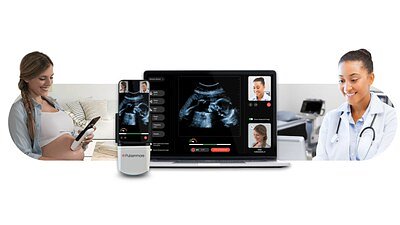
At-Home Ultrasound Gains FDA Approval, Promising Broader Access to Prenatal Care
The FDA has authorized Pulsenmore’s home-use prenatal ultrasound device, potentially revolutionizing access to care for expectant mothers in underserved areas and reshaping the future of prenatal monitoring.
At-Home Ultrasound Gains FDA Approval, Promising Broader Access to Prenatal Care
NEW YORK, NY – November 03, 2025 – The U.S. Food and Drug Administration has granted De Novo authorization to Pulsenmore Ltd. for its Pulsenmore ES, a home-use prenatal ultrasound platform. This groundbreaking approval marks the first time expectant mothers can perform guided scans in the comfort of their homes, with results interpreted remotely by physicians, potentially expanding access to crucial prenatal care, particularly in areas with limited resources.
Bridging the Access Gap in Maternal Care
The FDA's decision comes as access to consistent prenatal care remains a significant challenge in the United States. According to recent data from the March of Dimes, over 35% of U.S. counties are classified as “maternity care deserts,” lacking sufficient access to birthing facilities or obstetric clinicians. This disparity disproportionately affects rural communities and marginalized populations. The Pulsenmore ES aims to address this issue by bringing ultrasound monitoring directly to patients, eliminating geographical barriers and reducing the strain on overburdened healthcare systems.
“The potential for this technology to level the playing field is substantial,” said one medical professional. “For patients who live hours from the nearest clinic or struggle to take time off work, this could be a game-changer.” The device operates through a smartphone app, guiding users through the scanning process and securely transmitting the captured images to a physician for interpretation. This model allows for more frequent monitoring and earlier detection of potential complications, potentially improving both maternal and fetal outcomes.
A Disruptive Technology in a Growing Market
The market for remote prenatal monitoring is experiencing significant growth, fueled by the increasing demand for convenient and accessible healthcare solutions. Several companies are offering remote patient monitoring platforms, but Pulsenmore ES distinguishes itself as the first to receive FDA authorization for a home-use ultrasound device. This first-mover advantage positions the company to capitalize on a rapidly expanding market and potentially disrupt traditional prenatal care models.
While other solutions focus on data collection via wearable sensors and virtual consultations, the Pulsenmore ES offers a more comprehensive diagnostic tool. GE Healthcare recognized this potential, investing up to $50 million in Pulsenmore in May 2022, indicating a strong belief in the technology and its market viability. The company’s focus on affordability and scalability aims to make prenatal care more accessible to a wider population, potentially driving down costs and improving health equity. However, the financial performance of Pulsenmore has been inconsistent, reporting a net loss of 23.16 million ILS for the last half-year, despite a significant increase in sales in 2022.
Ensuring Safety and Efficacy Through Physician Oversight
While the prospect of at-home ultrasound is exciting, safety and efficacy remain paramount concerns. The FDA’s approval process included a multi-center clinical trial to validate the accuracy and reliability of the device and to ensure that patients could safely perform scans under remote physician supervision. The Pulsenmore ES is not intended to replace traditional in-clinic ultrasounds, but rather to complement them, offering more frequent monitoring and earlier detection of potential issues.
“The key is that this is not a standalone diagnostic tool,” explained one expert. “Physician oversight is crucial to ensure that the images are interpreted correctly and that any necessary interventions are taken promptly.” The device requires a prescription and ongoing monitoring by a qualified healthcare professional, who reviews the images and provides guidance to the patient. This model ensures that patients receive timely and appropriate care, while also reducing the burden on healthcare providers. The company emphasizes that the device will be eligible for reimbursement under existing billing codes, potentially facilitating widespread adoption.
